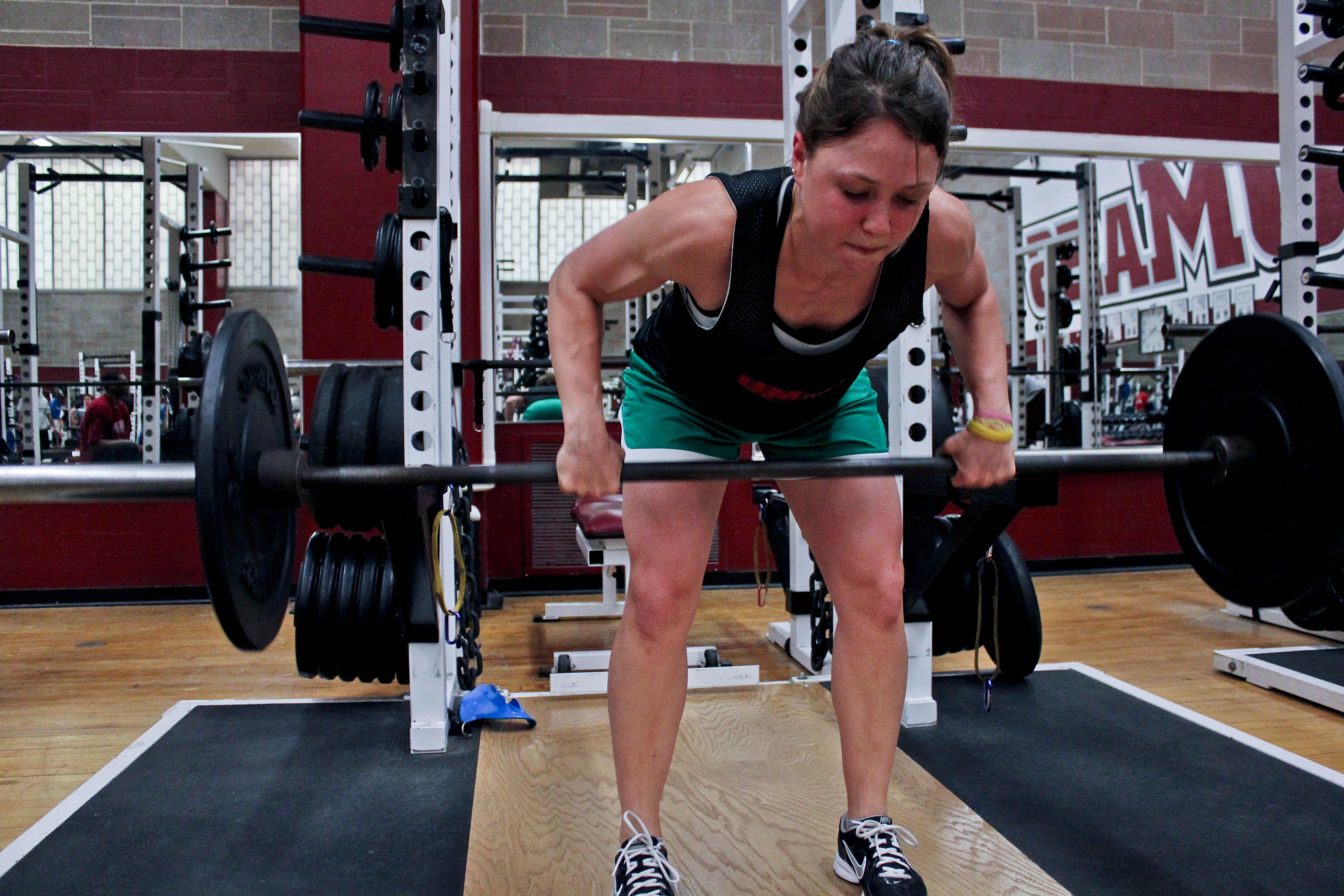In the weight room, the object should be to condition and strengthen your muscles. Not to strengthen your ego. In fact, attempting to strengthen your ego in the weight room can put you at odds of the real goal. It can do this in two ways. The more obvious way is that improper lifting and stressing your body with poundage it can't handle with a correct lift can increase your risk of injury. The other way, is that by taking a shortcut, such as a greatly reduced range of motion, your muscle is not being strengthened to near the degree it could be using correct lifting technique.
These shortcuts seem to be taken more on certain lifts than others. It is highly probable that the lift done least correctly by the most number of people is the squat. We have all seen many people load 400-500 pounds onto the bar and then squat down five or six inches. One other lift where cheating is also rampantly observed is the back barbell row. Many do not even realize that they are doing this lift wrong, as definite technique is often not taught. Hence, people can be injured from rounding their backs, or end up moving the weight in only a few inches worth of range of motion.
The most common method of barbell rowing, especially by heavy lifters, is the following: The bar is lifted off the rack, or platform in a standing position. The lifter bends over at about a 45-60 degree angle, and rows the bar towards the lower abdomen. And often, especially on heavy lifts, it consists of using momentum by swinging the back at the hips. This use of momentum will de-emphasize the lats, which are the prime movers of the barbell row. The reason behind performing the movement this way is to be able to lift a heavier weight than what your lats can actually handle. These jerking movements carry a risk of injury to the biceps and lats, and the greatly reduced range of motion will hamper the development of those two muscle groups.
How to Correctly Perform the Movement
1. It is probably easiest to start with the weight on the floor. Not on the rack, or at any elevated position. That way, it will make it easier for you to get your body in the proper positioning before you have a heavy weight in your hands. This is most true for the working sets; it is somewhat less important on the warm up sets with light weight.
2. Body positioning: your knees can either be straight, or slightly bent. Place your feet about shoulder width apart. As with all lifts and movements where you are handling a weight in a bent position, it is extremely important to keep your back straight, at the very least. It is ideal to keep an upward arch, but most importantly, do not round your spine. That places undue shear force on your discs, and your luck will eventually run out, more likely sooner than later. Your back should be bent at an angle just short of 90 degrees.
3. Starting with the weight on the floor, pull upwards in a fluid motion. Do not use your spinal erectors to create momentum and jerk the weight upwards. Pull the weight towards the midpoint between your sternum and bellybutton. If you cannot get the weight all the way to your abdomen, use a lighter weight.
4. Lower the weight in a controlled manner until it touches the floor. Do not bounce the weight off the floor to start your next rep. When the weight hits the floor, pause briefly, then repeat. Aim for a weight where you can do 8-12 reps for three sets.

No comments:
Post a Comment